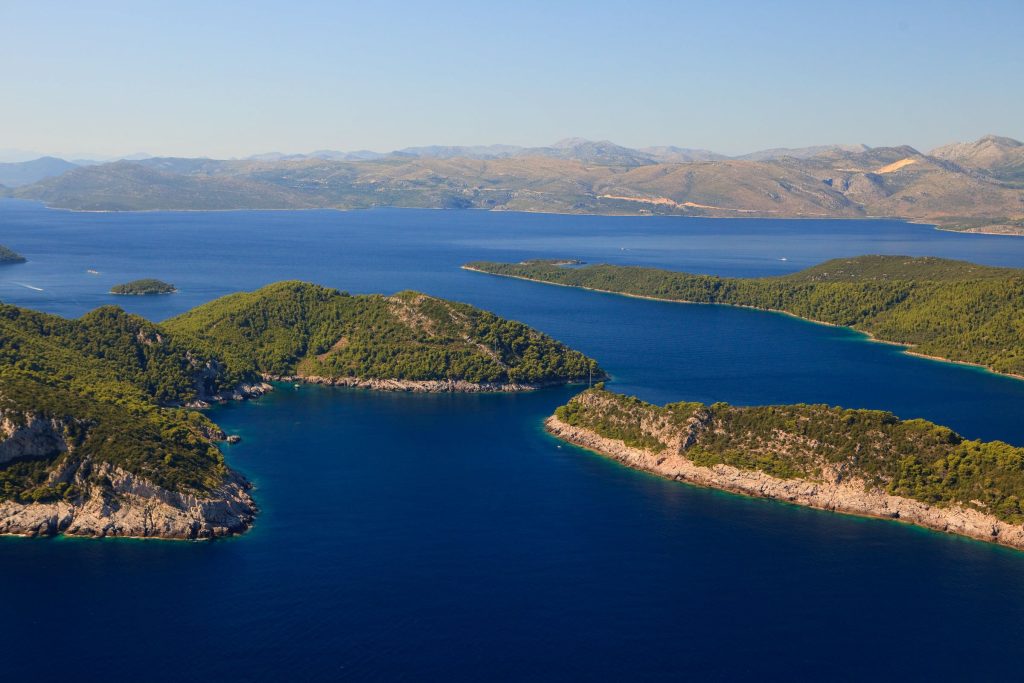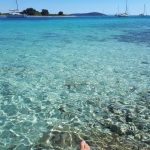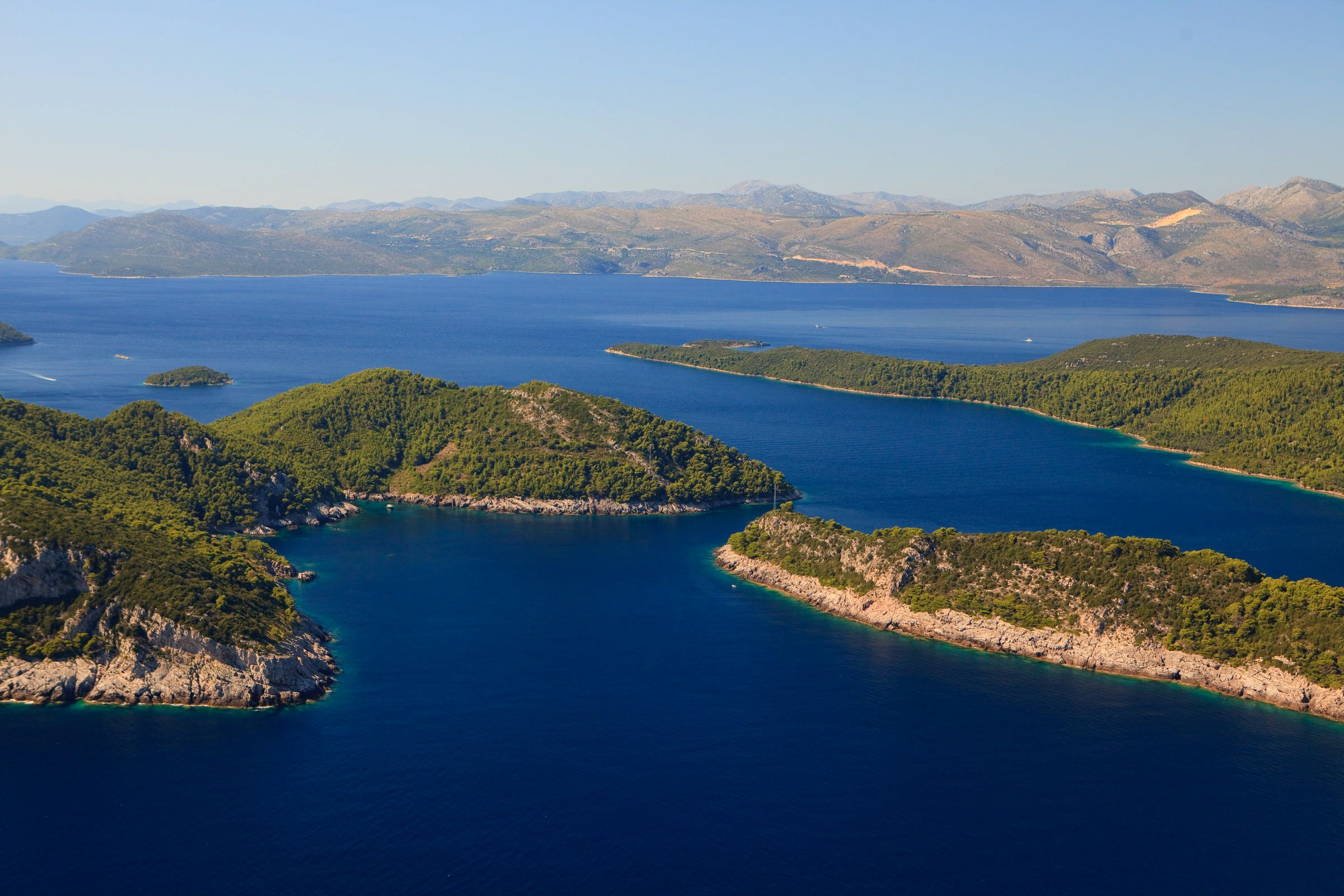
Thought Croatian islands are all the same? Continuing the popular TCN series, 25 Things to Know about Croatia, on June 26, 2016, a look at the great choice and diversity on offer on Croatia’s more than 1000 islands in the Adriatic.
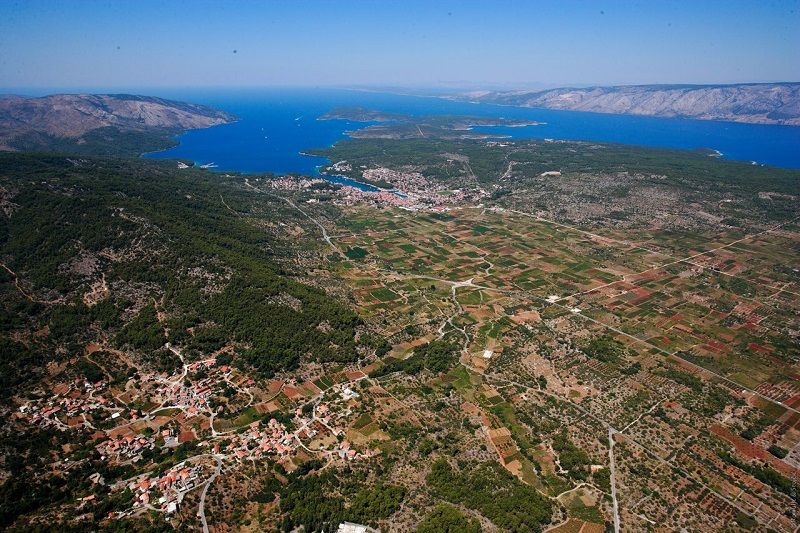
1 UNESCO island – Hvar
It is known as Europe’s sunniest island, Croatia’s premier island, and the island of lavender, celebrities and fine wine. But did you know that Hvar is also the island with the most UNESCO heritage of any island in the world? Pride of place goes to one of Croatia’s seven UNESCO World Heritage Sites, the Stari Grad Plain (pictured above), but it is also rich in UNESCO intangible heritage: the unique Za Krizen (Behind the Cross) Easter Procession in Jelsa and surrounding villages for more than 500 years; the agave lace from the Benedictine Nuns who have been on Hvar for more than 350 years; the Hvar Mediterranean diet, which was added along with six other locations on the Mediterranean a couple of years ago; and if you add the klapa singing of southern Dalmatia, that brings the UNESCO number to five – no other island has three. And this DOESN’T include the oldest public theatre in Hvar Town, built in 1612. To learn more about Hvar, here are 25 things to know.
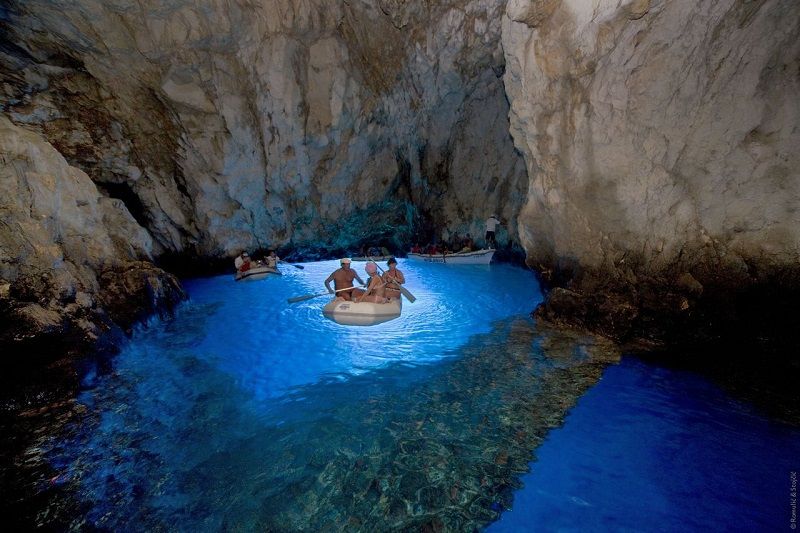
2 Blue Cave of Bisevo
Croatia is full of spectacular scenery and unique natural phenomena, some of which are among the country’s top tourist attractions. None is more popular than the stunning Blue Cave of Bisevo, close to the island of Vis, one of the most popular day trips from places like Hvar and Split. The natural entrance to the cave, located on its southern side, is said to resemble a vault on the ceiling of a grotto. It is through this submarine-like opening on the ceiling of the cave that sunlight gets in and creates an iridescent blue glowing effect all around the cave. As well, a stone bar, connecting two walls of the cave, is clearly visible just below the waterline, both in above-water photographs and in underwater photos.
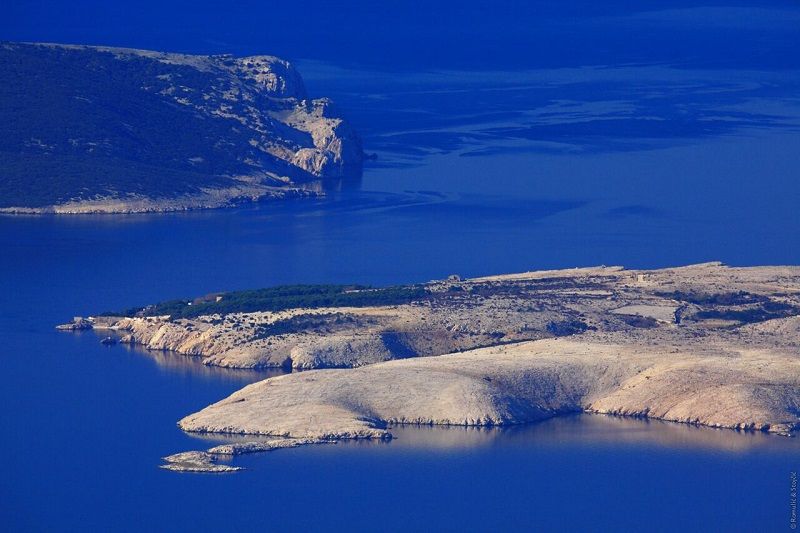
3 Prison of Goli Otok
Literally ‘Naked Island’, Goli Otok has a history that has little to do with tourism. A very barren island, Goli Otok was never permanently settled until the last century, and its main use was as a top security prison from 1949 to 1988, before the prison was abandoned completely in 1989. Political prisoners were subjected to forced labour in summer temperatures in the mid-30s, contrasted with the biting bura winds in winter. Shepherds and the occasional tourist visiting what remains of the prison are the most frequent visitors these days.
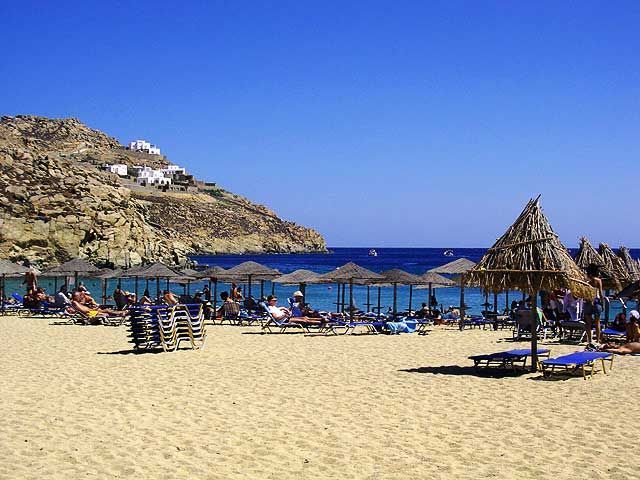
(Photo credit Himalayan Yoga Institute)
4 Sands of Susak
Think there are no sandy beaches in Croatia? Think again! While pebble beaches are by far the most prevalent beaches, there are sandy beaches to be found in pockets all over Croatia. And nowhere does sandy beaches better than the small island of Susak, which is accessible by regular ferry from Rijeka and Mali Losinj. There is only one settlement on the island – also called Susak – and if you are looking to get away from it all and are a sandy beach lover, this is the island for you.
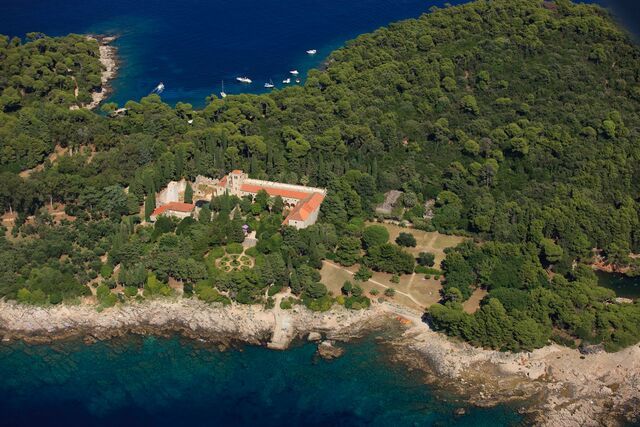
5 Mysterious curse of Lokrum
Located with a picture perfect view of the old town of Dubrovnik, the small and lusciously green island of Lokrum is the perfect escape from the crowds and into nature for the many locals and tourists alike in the Pearl of the Adriatic, and with regular boats to the island, it is a very popular day trip destination. But don’t let the tranquil scenes deceive you, for there has been plenty of international intrigue and skullduggery on this slice of Dalmatian paradise, including the Curse of Lokrum, as explained by Wikipedia:
The first written mention of Lokrum was in 1023 when the Benedictine abbey and monastery were founded. The name Lokrum comes from the Latin, ‘acrumen’, meaning sour fruit. This derives from the tradition of cultivating exotic plants on the island, a tradition started in the time of the Benedictines. The last Benedictines left the island in 1808. Local legend says that on their last night, the monks put a curse on the island and anyone who tried to seek it for their own in the future.
According to legend, Richard the Lionheart was shipwrecked in 1192 after returning home from the crusades and was cast safely ashore on Lokrum. He pledged to build a church on the island but, at the plea of Dubrovnik citizens, the church was built on the nearby mainland instead.
The former Benedictine monastery
Archduke Maximilian Ferdinand of Habsburg had a mansion built on the island in 1859 with a magnificent garden laid out, criss-crossed with pathways, full of amazing plants and botanical wonders. The island was originally purchased by Maximilian’s wife Archduchess Charlotte of Austria, with part of her marriage dowry, and she retained ownership of the island even after she and her husband became Emperor and Empress of Mexico. After the Emperor Maximilian’s execution the island was surrendered to the Habsburg Family in a deal struck between Franz Joseph I of Austria and Leopold II of Belgium. Charlotte had become insane and Leopold had renounced in the name of his sister all claims to her and her husband’s property in Austria. Leopold was more concerned with acquiring his sister’s great fortune than with her rights to property in Austria. The island was given to Archduchess Elisabeth Marie of Austria as part of her marriage dowry; Yugoslavia claimed it under the Treaty of Saint-Germain. Princess Elizabeth stated that she was no longer a Habsburg, having renounced her rights on the occasion of her marriage; therefore Yugoslavia had no right to sequester the property. The case was settled by a payment of $575,000 to the Princess.
In 1959 a Botanical Garden was founded on Lokrum which contains native and imported, tropical and subtropical plants, and other vegetation originating from Australia and South America. The island is also inhabited by families of peacocks brought over by Maximilian from the Canary Islands.
The island is now a popular destination with visitors to Dubrovnik. A restaurant is located in the former monastery, and walking routes round the island are marked out. There is also a nudist beach at the south-eastern end of the island.
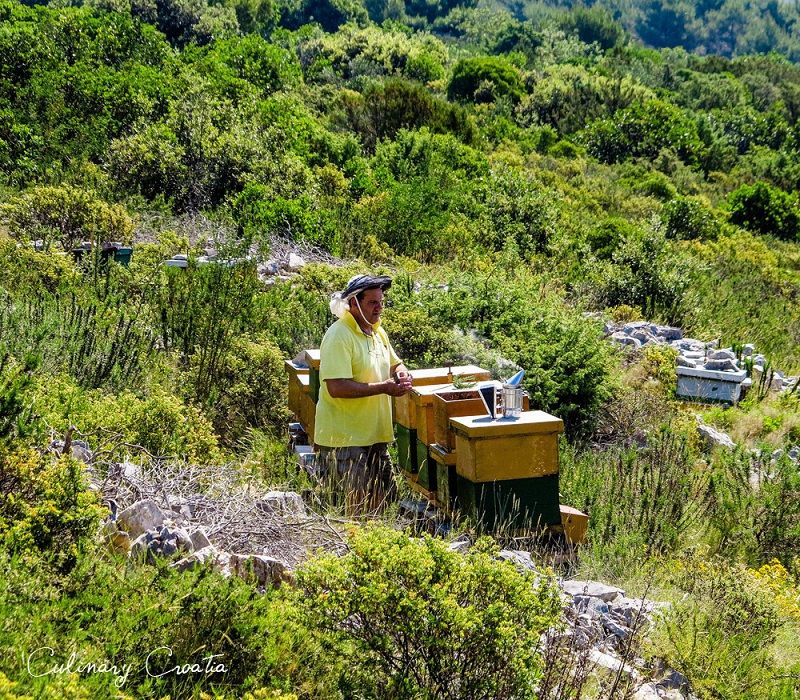
(Photo credit – www.culinary-croatia.com)
6 Honey and olive oil of Solta
The closest island to Split by regular ferry is Solta, just 45 minutes away, and yet it is often overlooked in favour of its more fashionable neighbours Hvar, Brac and Vis. The result is a relatively undiscovered, but highly accessible, island rich in natural treasures. Solta honey is among the best in the country (don’t miss the rosemary), and its bee-keeping association dates back to 1875, and there is written evidence about the healing properties of Solta honey dating back to Roman times. Its honey tradition and quality is matched by its olives, and Solta olive oil is highly prized, with some trees dating back more than 1000 years. A honey and olive tour of Solta is a very popular day trip from Split, and to learn more about these and 25 things to know about this beautiful island, read the impressions of TCN’s Filipa Marusic.
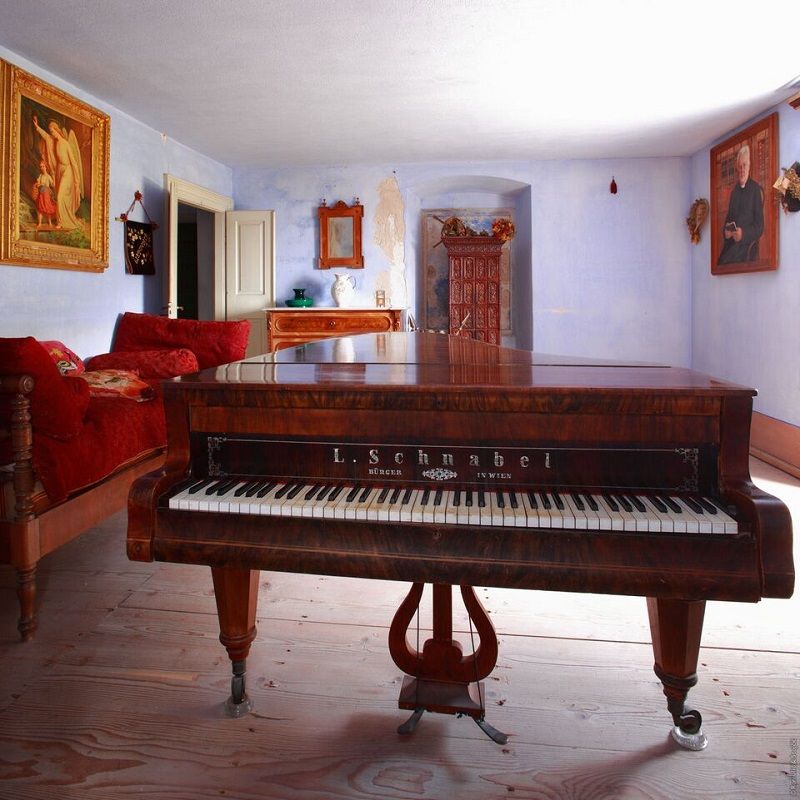
7 Monasteries of Brac
The island of Brac is most famous for the stunning Zlatni Rat beach in Bol, surely the most iconic and recognisable in all Croatia, as well as the claim that the famous stone from its quarries was used in many famous buildings all over the world, including The White House in Washington. Brac is in fact one of Croatia’s most diverse and fascinating islands, rich in heritage, nature, cuisine, activities and tradition. It is also an island which has a very strong religious heritage, and indeed the Central Dalmatia Tourist Board recently developed a brochure of religious trails on the island, linking the churches and monasteries of Brac. None is more spectacular than Blaca monastery, which is still inaccessible by car today and involves quite a hike. Spare a thought then for the monks who helped furnish it, including the transportation of this fine piano. As popular blog Chasing the Donkey explains:
“Weighing 400 kilograms; the piano was carried up the two and a half kilometre steep mountain side by workers of the hermitage. Locals say, that along the way the men drank 56 litres of wine to quench their thirst and give them the boost they needed to make it up the steep hill.” Check out the rest of the Chasing the Donkey report on Blaca, and then TCN’s Goran Antonijevic’s 25 Things to Know about Brac. And then spare a though for these heroic piano carriers next time you are asked to carry a piece of furniture…
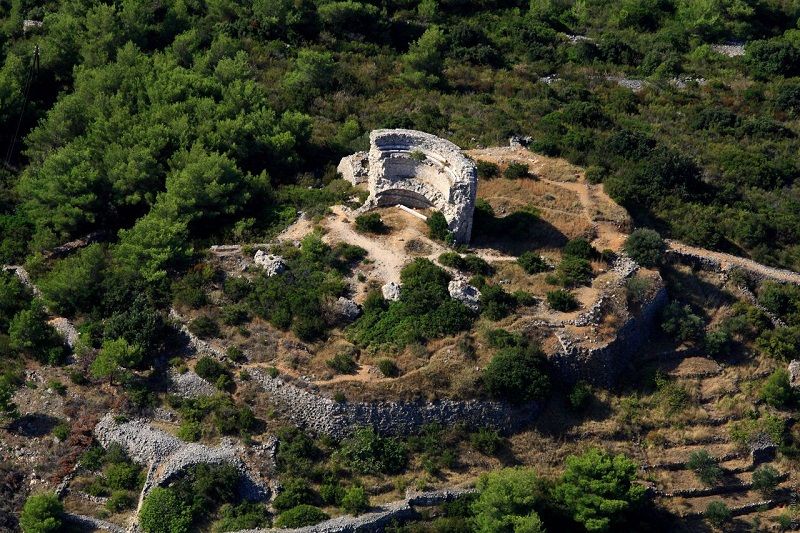
8 Military base of Vis
For some, the island of Vis is the most idyllic of them all. Located a reassuring distance from the mainland to ensure it is not overrun (there are daily catamaran – 1.5 hours – and car ferry – 3 hours – connections from Split), it is a little harder to get to than Brac, Hvar and Solta, which tends to give it a very relaxed feel. With its outward position facing Italy, Vis has historically played a very important military role in regional affairs, with the British links to the island particularly strong. Did you know, for example, that outside the UK, Vis was the first place in all Europe to introduce cricket, after a bored naval officer stationed there introduced the game in 1809. The tradition was recently resurrected on Vis, and the island celebrated 200 years of cricket in 2009. There is an active Vis Cricket Club to this day.
But it is the military heritage for which Vis is best known. From the British stationing during the period of the Napoleonic wars to the use of Vis as an advance base during World War II, the British military impact on Vis history has been strong, and it is best reflected today in some of the fortresses and cemeteries housing fallen Allied soldiers. The island’s military association only intensified after that war, as Tito turned Vis into a military island, closing it off to unwelcome prying foreign eyes, and building a variety of strategic military features on Vis, including submarine bases hidden into the island’s craggy coastline. The result for the modern tourist is a fascinating military tour of Vis over the last 200 years. Not to be missed.
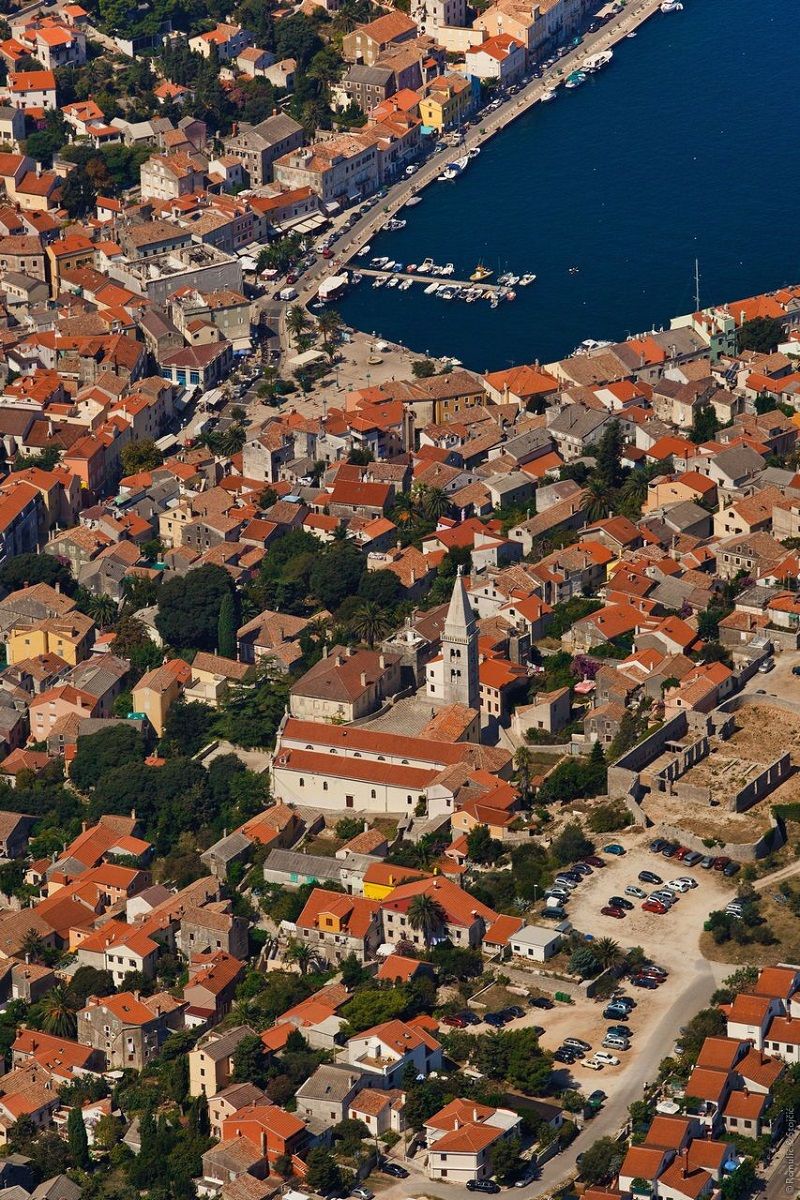
9 Losinj – Island of Vitality (or Apoxemonos story)
Moving much further up the coast is Losinj, once very hard to reach from Dalmatia, but now accessible in under an hour by seaplane from downtown Split. Losinj is one of the leading lights in Croatian tourism, with much progress, investment and innovation in recent years leading to national and international awards for its tourism. It is know as the Island of Vitality, not jut for its reputation of a top health tourism destination today, but also due to the famous Ancient Greek statue of Apoxyomenos, as explained by Spirituality Health:
“In 1996, a Belgian tourist was scuba diving about 140 feet below the surface of the crystal-clear Adriatic Sea near the Croatian island of Losinj, when he happened across something spectacular. Wedged between two rocks and covered in colorful sponges was a life-size statue made of bronze. Three years later, when archaeologists raised the statue, it was revealed to be a Classical Greek Apoxyomenos, an athlete—most likely an Olympic wrestler—in the process of removing oil and sand from his nude body with a small metal scraper called a strigil.
“Though heavily encrusted and saturated with salts, the statue was complete, the best of its kind. After seven years of restoration, the beautiful young athlete was once again on his feet, first in Zagreb, and then in Paris, in front of the Louvre. Now he is being brought to his own museum on Losinj to symbolize the rebirth of an island that became famous in 1892 as a natural health resort: the “Island of Vitality.”
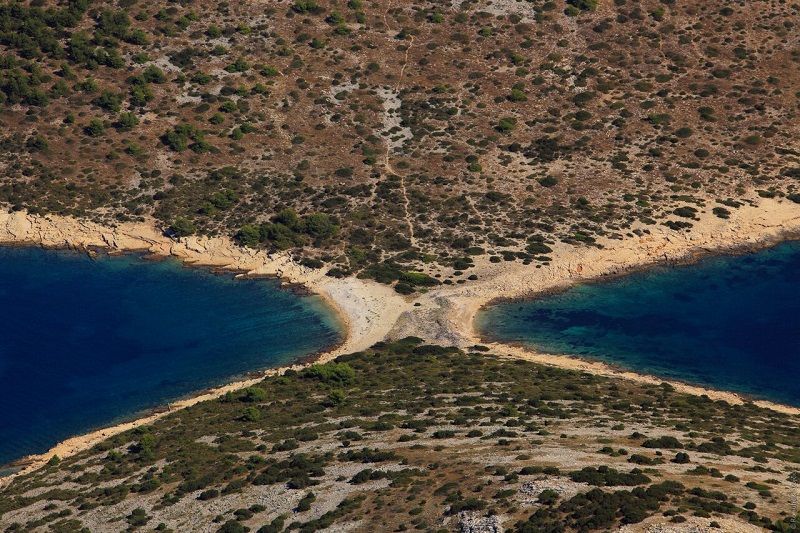
10 Maze of rock and sea Kornati NP
It always seems to me that the islands of the Adriatic and the sea in which they live are different depending on where you are. Very beautiful in my adopted home of Central Dalmatia, where the lush pine forests and azure sea offer a colourful contrast. But no less beautiful, although with a different aspect, further up the coast. Places like the Kornati islnads and national park, which are a sailing paradise, and whose maze of rock and barren landscape is in stark contrast to the greenery of the islands further south. But there are surprises even here, and if you sail the length of the longest island, Kornati, you will come across a rather extraordinary oasis of olive goodness surrounded by more barren fields. It is a Dalmatian tradition that a young man asking his prospective father-in-law for his daughter’s hand in marriage would have to plant a number of olive trees in order to get the permission. This Kornati father decided to test the young boy, and he demanded a tree for every day of the year. Work on the rocky island with no water was hard, and the task took ten years. He finally got his girl, and Kornati got a delightful olive grove on the water as a result.
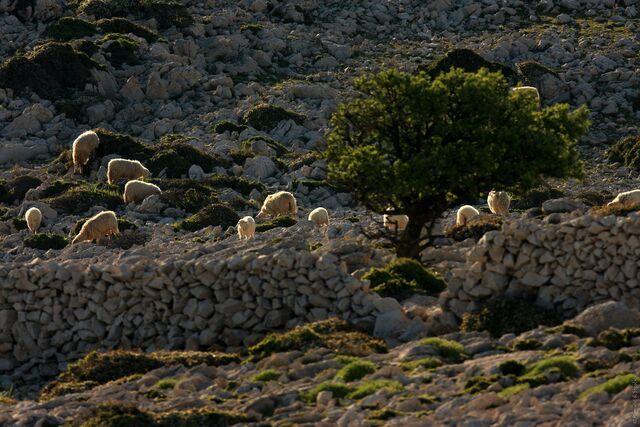
11 Olives, cheese and lamb of Pag
Can there be a more diverse island than Pag? Mention it to the younger party crowd, and it will mean just one thing – Zrce, the famous party beach near Novalja, which has earned the reputation as being THE party destination in Croatia, with an array of clubs and events which keep the summer fun going on the water in the glistening Adriatic and under trademark blue skies. But talk to gourmet lovers, and you will have a very different, much more calming impression of Pag. For here is the best lamb in all Croatia, and the culinary treasures do not stop there, as the island can also claim the best cheese in the world, as the Gligora Paski Sir (Pag sheep’s cheese) was once again named the best cheese in Central and Eastern Europe at the World Cheese Awards.
12 Galesnjak – the heart-shaped island
There is not much to add to this one – the picture above says it all. Croatia, Full of Love, symbolised by the heart-shaped island of Galesnjak. And for those who want to express their love in the most romantic of ways with a marriage proposal, the good news is that although it is not easy, it IS possible – find out how through this excellent blog and experience with Secret Dalmatia.
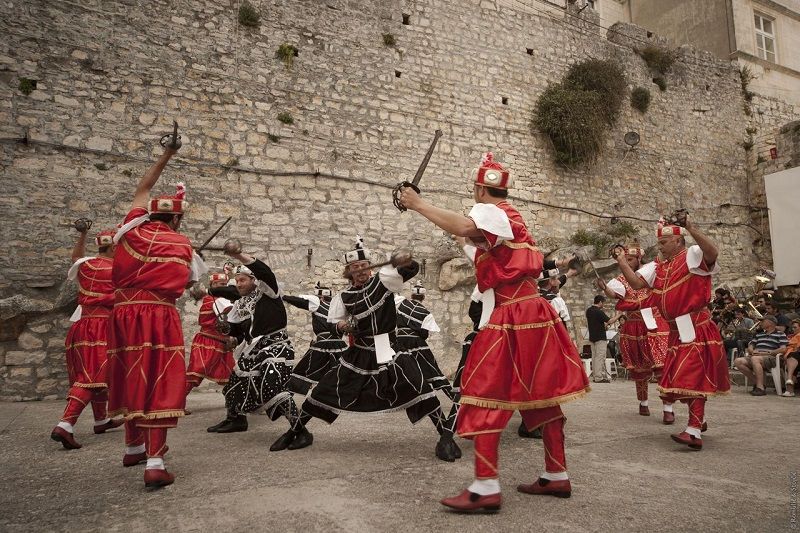
13 Korcula – island of Marko Polo
It is one of the great paradoxes of Croatia for me. Why would the world’s most famous traveller leave such a gorgeous island like Korcula to go travelling at all? When you are born in Paradise, why the need to leave? Easily Korcula’s most famous son, it must have been the gorgeous view from his bedroom window overlooking the Korcula channel and Orebic on the Peljesac Peninsula which fuelled young Marco’s wanderlust, but as he left on his travels, perhaps he did his neighbours a favour, keeping the magic of Korcula a secret for hundreds of years. An exceptionally green island, the jewel is the superbly intact Korcula Old Town, but that is just part of this magic of this island famous for its white wines, including the delicious and delightfully unpronounceable Grk. TCN’s Korcula experts have prepared 25 things you need to know about the island of Marco Polo’s birth.
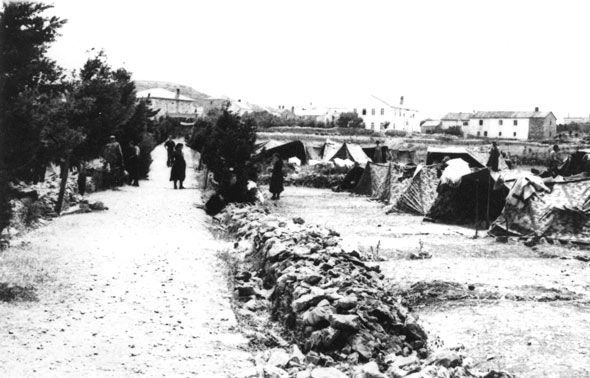
(Photo credit http://www.jusp-jasenovac.hr/default.aspx?sid=7275)
14 Concentration camp of Molat
It was visited by abdicated British King Edward VIII and new wife Wallis Simpson in 1939, but the beautiful island of Molat is better known for a darker period in its history just a few years later. Above is the Italian concentration camp in Jaza bay, which was established 30 June 1942. 25,000 prisoners came through this camp until its closure on 7 April 1943, of whom 500 died. Today, Molat is a peaceful and pretty destination off the beaten track, connected by daily ferry to Zadar, and ideal for hikers, as well as sailors exploring its numerous bays and coves.
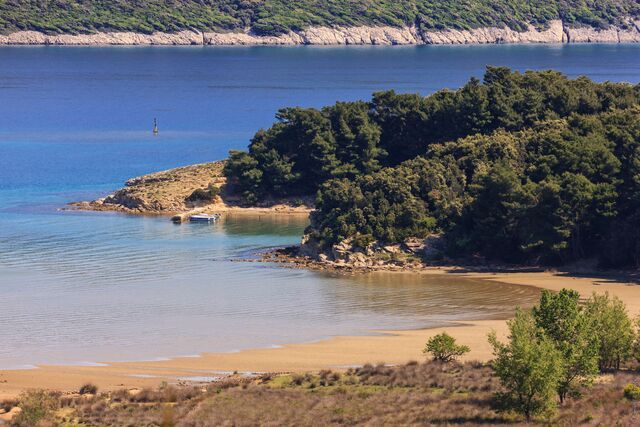
15 Royal naturist heaven – Rab
Edward and Mrs Simpson may have visited Molat, but they more than left their mark on the island of Rab, where they surprised their hosts with a request to go skinny dipping after lunch. The rather unusual request was granted, and the couple both swam naked in the bay of Kandalora in August 1936. This event is often regarded as the start of what has become a very important sector fo Croatian tourism – naturism. Naturism exploded in the 1960s with the arrival of mass tourism, and naturists have an abdicated British king to thank for this type of tourism. A musical called ‘The King is Nude’ is based on the story, and is played on occasion in theatres in Croatia. Fabulous beaches and FKK tourism apart, it would be harsh to limit Rab to these stereotypes, and Rab is known as the Happy Island, with its bell towers and old towns well worth a visit.
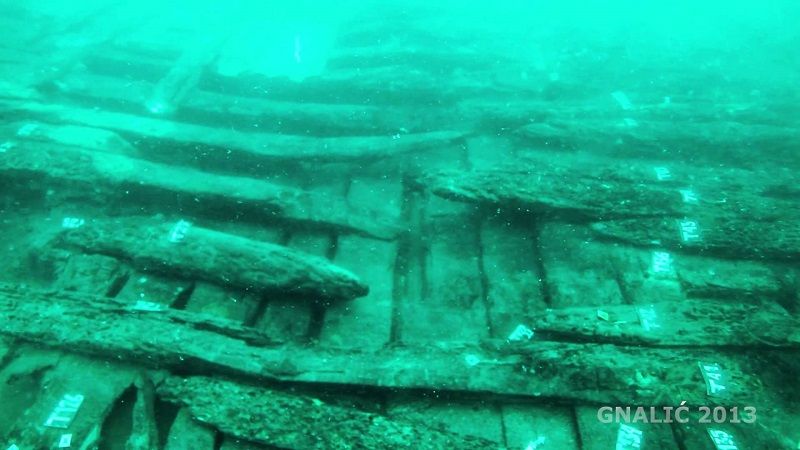
16 Gnalic wreck
Not all of Croatia’s island attractions are on the islands themselves, and the tiny island of Gnalic has been made famous for a find in its waters close to the island:
The Gnalic shipwreck was discovered by sport divers in the early 1960s, lying at a depth between 25 and 29 meters, near the Gnalic Island. Archaeological remains of a large ship dated to the late 16th century. This audio-visual work was composed by Kotaro Yamafune, a Ph.D. student at Texas A&M University, as a part of primary results of Gnalic Project 2014 field season. Original 3D models of the shipwreck site was created by multi-image photogrammetry. These models contain exact 1/1 scale dimensions, hence models can be used as archaeological data, and any measurements that archaeologists want can be extracted using the modeling software.
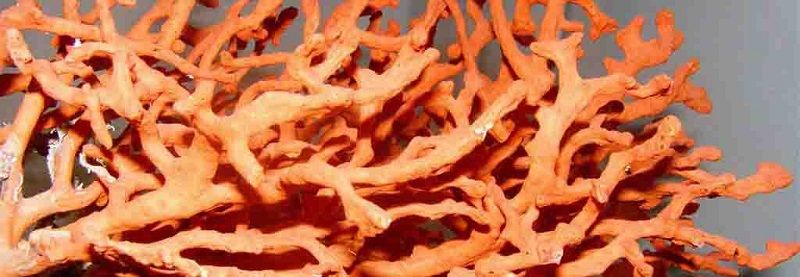
17 Corals of Zlarin
And while some famous attractions in the sea come from afar – like shipwrecks – others are original and indigenous, such as the famous coral from Zlarin:
“Let no one get mad at me if I say that I like a coral necklace more than a gold one. Red branches that look like branches of a stunted tree in a rockery are the fruit of red gardens under the deep blue sea. No one knows who and when caught the first corals, who was the first one to bedeck his girlfriend with them. Someone looked for gold, but my great-grandfathers searched for red corals on the island of Zlarin.”
The Zlarin coral tradition dates back to the 13th century, and ‘Zlarin coral set in stone’ was named as Croatia’s best tourist souvenir in 2010. Don’t miss the Farewell Coral Divers festival in August, when the island’s colourful coral jewelry comes out in force as locals celebrate the 800-year coral tradition.

18 Sponges of Krapanj
A rather more unusual diving activity takes place on the small island of Krapanj, which – at 1.5m above sea level – is the lowest of all Croatia’s islnads. It is also home to sponge fishing, a tradition which dates back 300 years. Sponge diving secrets have been attributed to a Franciscan monk who came from Crete, and the business get serious in 1893, with the arrival of heavy diving equipment and the founding of the first cooperative.
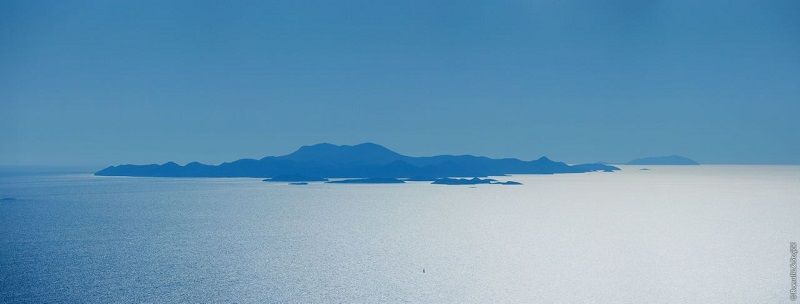
19 Natural wonders of Lastovo archipelago
With so many islands to choose from, those lying a little further from the mainland have to try just a little harder to entice visitors, bu those who make the effort to get out all the way to Lastovo have few regrets. It is an island of incredible history, with evidence of human habitation dating back to the Stone Age, of fiercely proud traditions, such as the famous Lastovo Carnival which dates back to the 14th century. And spectacular nature.
The Lastovo Archipelago was declared a nature park by the Croatian Parliament on the 29th of September 2006. It is the eleventh nature park in Croatia consisting of 44 islands, islets, rocks and reefs (the largest being Lastovo and Sušac) all covering a total area of 53 square kilometers of land and 143 square kilometers of sea. Its borders are lit by the stone lighthouses of Sušac, Tajan, Glavat and Struga. The Lastovo Archipelago was declared a nature park due to its mystic beauty, immense landscape, thick forests, high coastal cliffs, fertile fields with ponds, land and sea caves and numerous rare sea and land animals and habitats. The Lastovo Archipelago has a rich cultural and historical heritage with its many stone churches and chapels, picturesque chimneys and the traditional Lastovo Poklad carnival. But one unmissable part of the island are the locals, who prove that the coexistence of man and nature is always possible when accompanied by a developed environmental awareness.
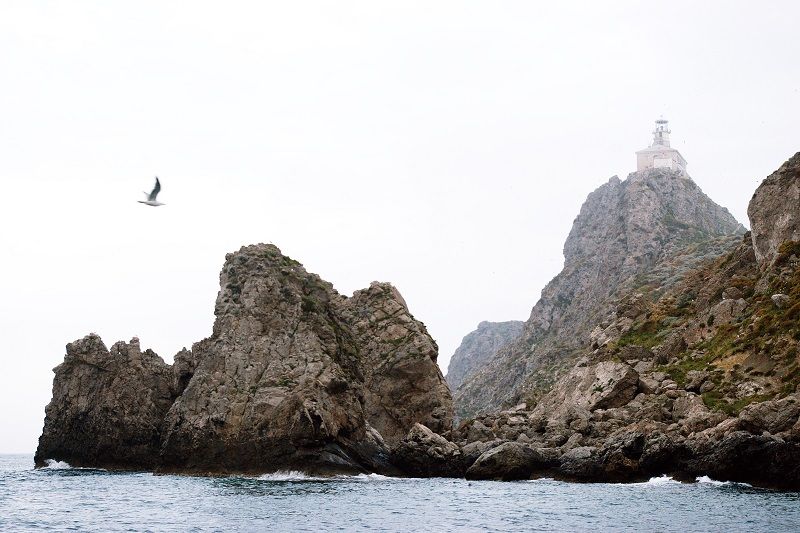
20 Palagruza – the island of Diomedes
Some islands are more accessible than others, and some are great symbols of isolation, and with great history. One of the most inaccessible is Palagruza, which is actually closer to Italy than Croatia, but can be reached by motor boat in clement whether in a 3-hour trip from Korcula. For some, Palagruza is associated with the Homeric hero Diomedes, king of Argos, who is reputed to be buried here, though it is hard to imagine where. Speculation is fuelled by the discovery of a painted 6th-century BC Greek potsherd with the name Diomed[es] on it. A shrine of the cult of Diomedes here is perfectly thinkable. Authentic archaeological finds of the Neolithic, Greek, Roman, and early medieval periods have been recorded.
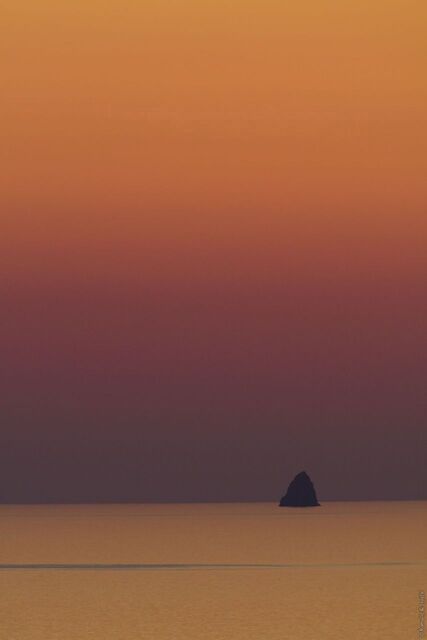
21 Jabuka – Volcano rock
If you want to say you have truly seen every part of Croatia, then head out to the last island in Croatian territory before you hit Italy – the uninhabited volcanic rock of Jabuka, but be careful… According to Amusing Planet:
The island of Jabuka, which means apple in Croatian, is a 97-meters-tall uninhabited volcanic island located in the Adriatic Sea, about 52 km west of the island of Vis. Jabuka, along with Brusnik, are the only two Croatian islands that are completely of volcanic origin. Together with Palagruza, that is only partly of volcanic origin, the three islands form an area called “Adriatic Volcanic Triangle”. Brusnik, Jabuka, as well as some parts of Komiska bay on the island of Vis and some parts of Palagruza originated from an eruption of magma due to the break up of the Pangea prehistoric continent over 200 million years ago.
Jabuka has magnetic properties due to the presence of magnetite, a naturally occurring iron oxide, in the rocks that causes the magnetic needles of compasses of passing ships to go awry. Although some say that ships actively avoid the island because of its magnetic anomaly, truth is, the island lies far from all sea routes. Boats can rarely be seen in the vicinity except those who have made the island their destination.
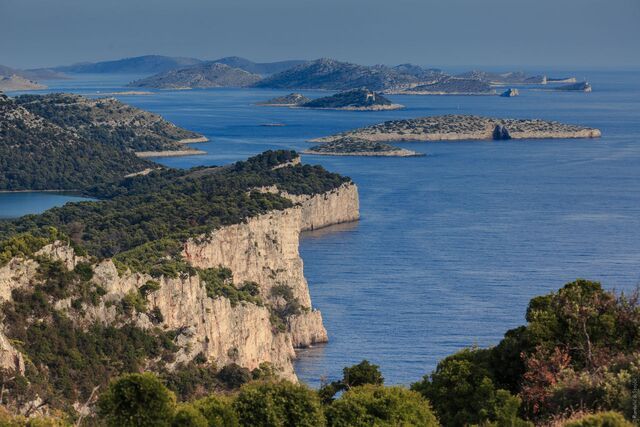
22 Bays of Dugi Otok
The islands of the Adriatic are full of fabulous coves and bays, some very populated, some totally isolated, and with a little planning and research, you can find the ideal island and bay for you. Few islands have a better offer than Dugi Otok, which literally means Long Island. Never more than 4km wide, there are plenty of spectacular options along its 45km length, and with part of the island contained in a Nature Park with spectacular cliffs, there are few more beautiful parts of the Adriatic.
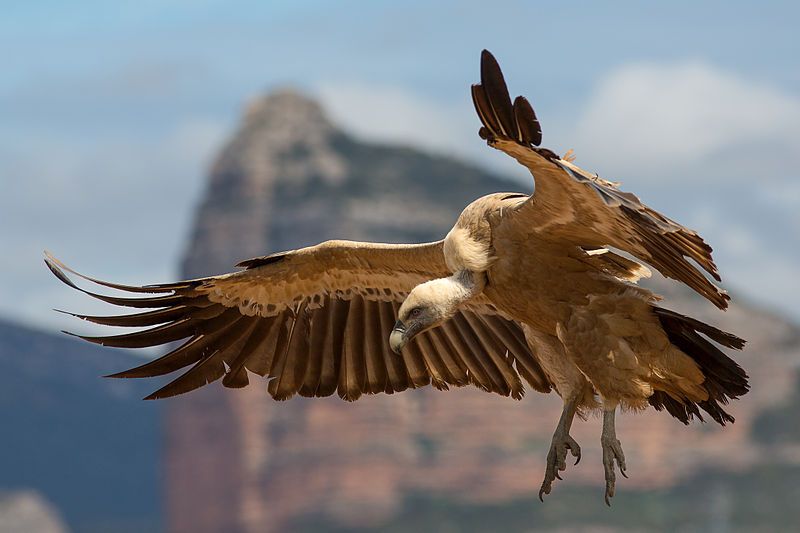
23 The Griffon Vultures of Cres
Sun, sea and beaches – these are the most important aspects of a Croatian island visit for many tourists, but the sheer diversity of what is to be found also extends to wildlife. Take the Griffon vultures on the island of Cres, for example. According to Wildlife Extra:
“The Griffon vultures on Cres are the only ones that roost by the sea anywhere in the world, possibly a legacy of when the sea level was much lower, as far back as 9000 years. So when young vultures are fledging, making that all important first flight, they often hit the sea if they make any mistakes. They can sometimes make their way back to the beach, but that is as far as they can get so if they don’t drown, they usually die on the beach. This can happen at anytime, but when the young birds are startled into that first flight before they are really ready, they crash land in the sea. And what makes them go early? Often as not tourist boats going much too close to the colony, frightening the birds into a premature flight.”
An eco centre was opened in 1993 as a rescue centre for the vultures, which has seen numbers grow from 20 pairs to 70 pairs. For more information on the Griffon vultures, click here.

24 Brijuni National Park
Never thought you would find en elephant, zebra or Shetland pony on a Croatian island? Think again! One of the most bizarre places on the Adriatic at the stunning Brijuni Islands, which are home to exotic animals – both live and stuffed – from all over the world. The reason is that this was the favoured retreat of Tito, and he used to receive international leaders here on State visits (more than 60 in all, and the impressive photo exhibition documents them all, from Castro to Arafat, Ghaddafi to Arafat. It was well known that Tito enjoyed indigenous animals from his important visitors, and with the majority of his visitors being from Non-Aligned countries, some of the animals were very exotic indeed. Not all survived in their new surroundings, but Tito had a solution for that too, having them stuffed and then put on display.
As one would expect, Brijuni is beautiful, and the tourist facilities extremely well-organised, with waiting trains on hand to give tourists a one-hour tour in four languages, where visitors can enjoy the wildlife, and afterwards play a round of golf, tour the museum or even go for a spin in Tito’s original Cadillac, complete with photo of Tito with Churchill on the dashboard.
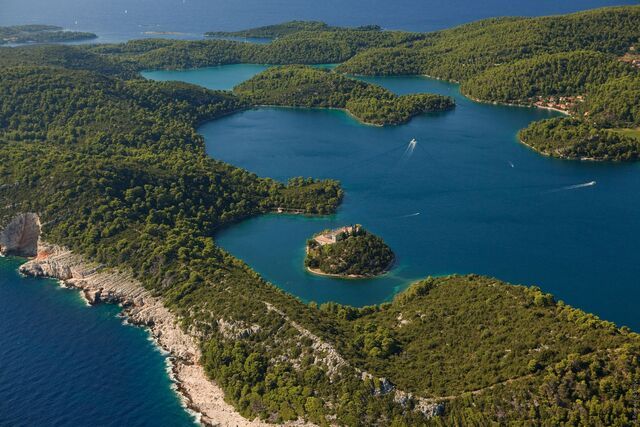
25 Lakes of Mljet National Park
No homage to the beauty and diversity of Croatia’s 1000 plus islands would be complete without one of the most beautiful of all – gorgeous Mljet off the southern Dalmatian coast. But for all its serene beauty today, Mljet is also the place of legends… and shipwrecks. Legend has it that Odysseus himself was shipwrecked off Mljet, the only survivor, and he was followed by St. Paul, who supposedly spend three months on the island. They certainly could have chosen worse places to be stranded, as Mljet is GORGEOUS. With more than half the island a national park, it is one of the greenest and most protected of all, and among its jewels are two unusual salt water lakes, called (rather uninspiringly) Veliko and Malo Jezero (Big and Small Lake).
26 Underwater settlement of Ricul
25 incredible islands, just a fraction of the magic that you can find off Croatia’s Adriatic coast, and we hope the overview will give you a little more insight into the diversity and choice available to you in the land with more than 1000 islands. But it is not just islands today which are of fascination to visitors, as there are plenty more underwater treasures of the secrets of inhabitation in centuries gone by. Consider, for example, the spectacular find, as TCN reported late last year:
“In the sea between the islands of Ričula and Galešnjak in the Pašman Channel in Croatia, archaeologists from Zadar last year found the remains of a large settlement and a port more than 2,500 years old. In early October of this year, the underwater archaeologists started a new research campaign along the coast of Turanj, but in the meantime they have received from the United States the results of radiocarbon dating of wooden pylons which were found deep in the sandy bottom, reports Slobodna Dalmacija on November 3, 2015.
The analysis showed that the underwater settlement and harbour were not 2,500 years old and that they had not been constructed by Liburnians. The dating of wooden pylons confirmed something that the archaeologists had not even dared to imagine – that the sunken settlement was actually 3,500 years old and was built even before the Liburnian era.”

